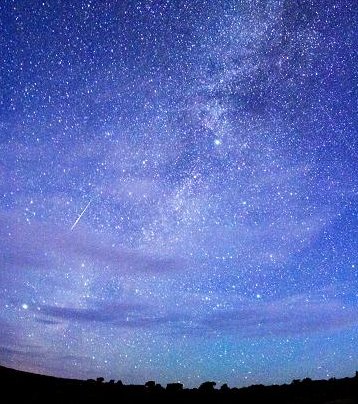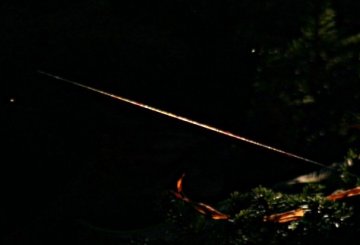 Where's Saturn? Is that a UFO--or the ISS? What's the name of that star? Get the answers from mySKY--a fun new astronomy helper from Meade. Where's Saturn? Is that a UFO--or the ISS? What's the name of that star? Get the answers from mySKY--a fun new astronomy helper from Meade. PERSEID METEOR SHOWER: The Perseid meteor shower peaked this morning, Aug. 13th, and by most accounts it was a good show. Meteor rates were lower than expected, but in recompense the display was spiced with many bright fireballs. "This bright Perseid competed with the twilight of dawn as the meteor zipped along the Milky Way towards the bright star Altair," reports photographer Thad V'Soske in Grand Valley, Colorado: 
Photo details: Canon 20D, ISO3200, 45-sec, 5:05am.
The shower is subsiding now, but it is not over yet. Tonight sky watchers can expect to see a continued drizzle of meteors, perhaps one-third as many as during the weekend. Stay tuned for updates and more photos. 2007 Perseid Meteor Gallery
[observing tips] [sky map] ARACHNID METEOR SHOWER: This weekend in San Francisco, Mila Zinkova photographed a very strange meteor cutting through the branches of a tree. It wasn't a Perseid. Zooming out reveals the true nature of this Arachnid meteor: 
"It's a spider's web," says Zinkova: click here. Sunlight glinting through the silken strand created a pseudo-meteor in the shadows of the tree. "It's been so foggy here in San Francisco lately, this may be the only meteor I see this month!" Readers, whenever you see a spider web in sunlight, pause to look. Arachnid meteors are just one of the many things you might see.
.2007 Noctilucent Cloud Gallery
[Night-Sky Cameras] ["Noctilucent Cloud"--the song] | 
